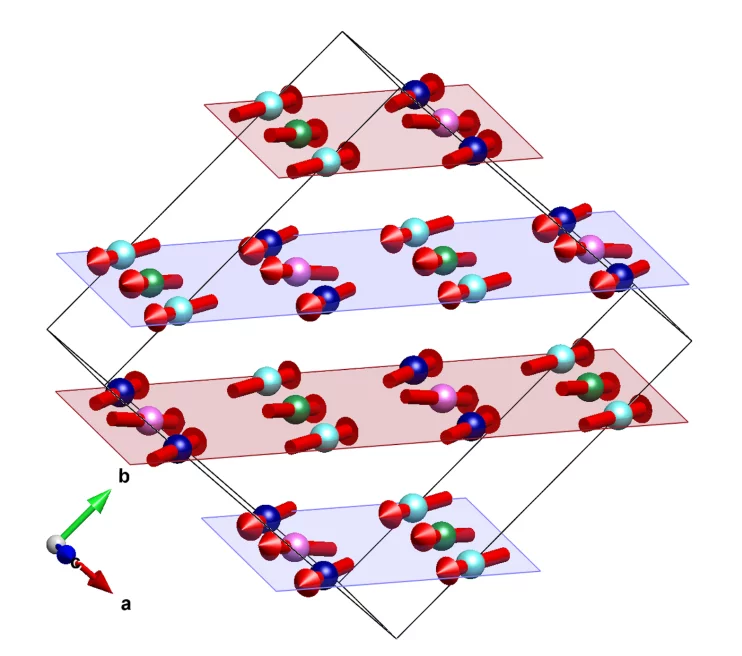The optical, magnetic, and electronic properties of functional solids, such as oxides or fluorides, are governed by a delicate interplay between atomic arrangement (crystal structure), chemical bonding, and electronic properties for the involved transition metals. In this project, we study Cr(II) and Cu(II) fluoroperovskites that have the special d4 or d9 electron configurations, which induce a structural Jahn-Teller deformation and thereof interesting physical properties. Similar electron configurations are found in important oxides based on Mn(III) and Cu(II), which display properties such as magnetoresistance and superconductivity. We study how chemical modifications of the compounds, and how external stimuli, as temperature, magnetic field, and pressure, influence the crystal structure and properties.
Recently, we reported on the elusive compound NaCrF3, which for a long time has been uninvestigated due to the challenging synthesis of the compound originating from the air-sensitivity of Cr(II).1 We showed that the compound adopts a highly distorted perovskite structure with space group P-1, isostructural to NaCuF3. Further, we showed by neutron diffraction and magnetometry that the compound is a weakly canted A-type antiferromagnet (Figure 1), with a Néel temperature of 21.3 K. A prominent upswing in the field-dependent magnetization was observed.1
Currently, we work on other Cr(II) and Cu(II) fluoroperovskites to understand the impact of the A-site cation on structure and properties. We are investigating the magnetic and optical properties of the compounds, and we will use neutron diffraction to further investigate the structural and magnetic details of the compounds.
Collaboration
- Ass. Prof. Dr. Martin Valldor, Dr. Bruno Gonano, Dr. Fabian Bernal, Salah Bra Amedi, University of Oslo, Norway
- Prof. Dr. Bjørn C. Hauback, Dr. Christoph Frommen, Institute for Energy Technology, Norway
Funding
- Research Council of Norway, Grant No. 325345
Associated junior researchers
- Dr. Oystein Slagtern Fjellvag, Postdoc, PSI/IFE
Publications
F. L. M. Bernal, J. Sottmann, D. S. Wragg, H. Fjellvåg, Ø. S. Fjellvåg, C. Drathen, W. A. Sławiński, and O. M. Løvvik, "Structural and magnetic characterization of the elusive Jahn-Teller active NaCrF3", Phys. Rev. Materials 4, 054412 2020

